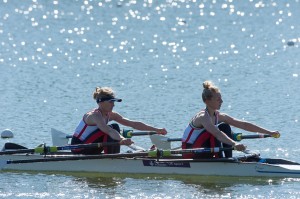You may be intrigued to know how the average person compares to a gold medal winning Olympic athlete when it comes to things like height, body mass, resting heart rate, arm span, body fat etc. Or, perhaps more frightening, how you measure up? I know this will resonate with my SAS colleagues in the UK as we’ve just launched a "get healthy" initiative. To kick things off we’ve had a number of these data points measured already to gauge our fitness levels, and even had our metabolic ages calculated from the data.

So you can imagine my interest when I came across a piece in last month’s Rowing & Regatta magazine by Mark Homer, lead scientist with the GB Rowing Team. In it he shows how the average male and female compare to gold medal winning Olympic rowers according to 10 distinct measures.
While this data is fascinating to explore – the resting heart rate of the Olympian is around 65 per cent that of the average person and they have about half the body fat – what’s important to note is this is just a tiny fraction of the information on each rower that is now being collected.
In addition, there is performance data: on the water, strength and conditioning, rowing stroke and a host of biomechanical data collected from various sensors on the boats. To make gold medal winning decisions, the GB Rowing Team needs to know every relevant fact about each of the athletes, and derive insights as to what affects their performance and what affects the performance of different combinations of athletes in a crew.
And that’s why the team is using analytics from SAS – to get answers to these questions immediately, without having to request data from different sources leading to long delays. There are many ways that information gleaned from the data can help – for example, spotting sings of injury so training regimes can be tailored accordingly, so maximising valuable training time. These are areas where they know they can improve their decision-making. The really exciting part is the ‘unknown unknowns’ – or as Mark describes them, “those things we didn’t even foresee before we started analysing the data and discovering what factors / combinations of factors affect performance”.
At the end of the day, winning a gold medal, as opposed to silver, depends on the finest of margins. The more you can understand about the rowers and how to get the best from their training, the better prepared you will be when the starter’s gun goes off.
I now know a bit more about my own fitness stats thanks to our get healthy initiative. There’s even a prize for the employee that manages the greatest reduction in their metabolic age over a nine-week period. I think I may have to book a couple of training sessions with the rowers to have any chance of winning!


